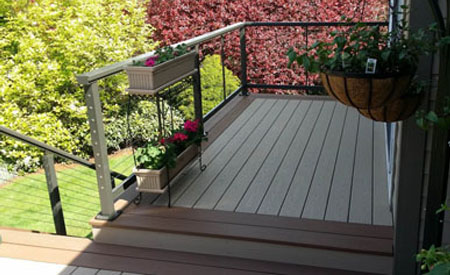With the improvement of people's living standards, the demand for decoration products is also increasing. People have higher and more urgent requirements for environmental protection and health. Flooring and carpets are essential parts of home decoration, but the space under the floor is also the largest, most hidden, and most difficult to manage source of indoor environmental pollution. Whether it is WPC decking, stone floor, floor mat, or the gap between floors, it forms an ignored and hard-to-reach hygiene dead corner, which contains bacteria, insects, mites, ants, and other organisms and microorganisms that directly threaten human health.
The existing method is to sprinkle traditional pesticides under the floor, which is effective in preventing insect damage, but pesticides themselves have toxic side effects. Even if they have passed the inspection of the agricultural department and obtained production permits, they are only applicable to agricultural and forestry production and other special purposes, and are not allowed to be used in household living environments. How to prevent bacteria from breeding on and under the floor from the root is a problem that needs attention, and WPC decking as a new type of polymer composite material can achieve the effect of antibacterial and bacteriostatic through additives.
Currently, with the continuous increase in people's demand for health, the safety and environmental protection of raw materials alone cannot meet people's needs. The functionalization of furniture, indoor and outdoor floors with antibacterial properties has become an irreversible trend. Due to the different antibacterial mechanisms and advantages and disadvantages of each antibacterial agent, the anti-corrosion and antibacterial effects of WPC decking are also different. By analyzing the research status of anti-corrosion and antibacterial plastic-wood composite materials, it is found that polymer antibacterial agents and various composite antibacterial agents are increasingly favored by domestic and foreign researchers due to their superior antibacterial properties.
The WPC decking has high environmental performance. The entire production and installation process is pollution-free and harmless, can be recycled again, and greatly saves the use of wood, which is suitable for the national policy of sustainable development. The product does not contain benzene substances, and the formaldehyde content is 0.2, which is lower than the EO standard and meets the European environmental protection standard. The service life of plastic-wood is generally three to four times that of ordinary wood, greatly reducing maintenance costs.
The plasticity of WPC decking is extremely strong, and personalized shapes can be easily achieved according to user needs, fully reflecting personal style. It comes in a variety of colors, with natural wood texture and wood grain.
The protective performance of WPC decking is also very significant. Its high fire resistance can effectively prevent combustion, and the fire resistance level reaches B1 level. It will self-extinguish when meets with fire, without producing any toxic gases. The waterproof and moisture-proof feature of WPC decking solves the problem that wood products are prone to decay, expansion, and deformation in wet and water-rich environments, and can be used in environments where traditional wood products cannot be used.


